Categories
- Argentina
- Chile
- Antarctica
- Easter Island
- Falklands (Malvinas)
- Bolivia
- Peru
- Uruguay
- Paraguay
- Brazil
- Venezuela
- Colombia
- Ecuador
- Galapagos
- Panama
- Costa Rica
- Cuba
- Nicaragua
- Honduras
- El Salvador
- Guatemala
- Belize
- Mexico
- Latin American Xmas
Pages
- Map of South America
- Home Page
- First week in Latin America – October 2009
- Map of Central America
- Contact Us
- The Jesuit Missions in South America
- A week in Buenos Aires
- Street Art of Buenos Aires
Archives
- October 2011 (3)
- September 2011 (9)
- August 2011 (10)
- July 2011 (7)
- June 2011 (6)
- May 2011 (11)
- April 2011 (10)
- March 2011 (4)
- February 2011 (5)
- January 2011 (6)
- December 2010 (6)
- November 2010 (4)
- October 2010 (8)
- September 2010 (5)
- August 2010 (7)
- July 2010 (5)
- June 2010 (6)
- May 2010 (6)
- April 2010 (7)
- March 2010 (6)
- February 2010 (9)
- January 2010 (4)
- December 2009 (8)
- November 2009 (5)
- October 2009 (2)
San Salvador
17th May 2011
El Salvador is the smallest country in Central America. We began in La Palma [1] just over the border from Honduras. This friendly colourful village has brightly painted murals on almost every wall, inspired by painter Fernando Llort.
.
Moving on to the capital San Salvador [2], dominated by Volcán San Salvador, we spent a pleasant evening, sharing a traditional meal with the Massi family, relatives of our friends Gloria and Alfredo. Pupusas, cooked rounds of cornmeal dough stuffed with a variety of fillings and eaten with cabbage salad are the national dish. The family history began in Italy. Two brothers came to El Salvador in 1923. One, Enriquo, created the country´s military flying school but later tragically died in an aeroplane accident. The other, Alfredo, was a pioneer film maker and produced most of the Salvadorian films of the 1930´s, mainly documentaries.
.
Staying in Hotel Posada del Rey Primero in San Salvador was more like staying with relatives. The staff are super friendly and the hotel, an old house, has little secluded areas to sit – all tastefully and brightly decorated.
.
Suchitoto [3], a colonial town on Lake Suchitlán north of San Salvador is known as “The Cultural Capital of El Salvador”. Founded by the Spanish in 1528 it was briefly the capital in the 16th century. For lunch, we enjoyed the best ever freshly made papusas from a stall in the market.
.
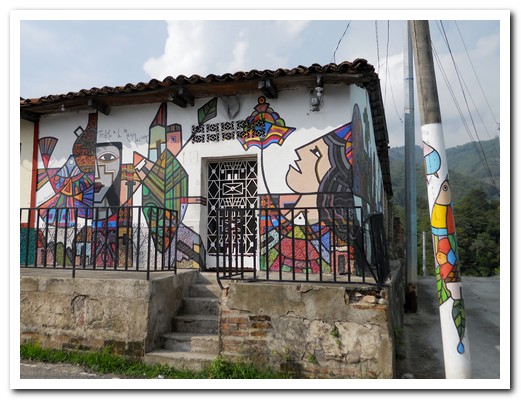
Colourful houses of La Palma
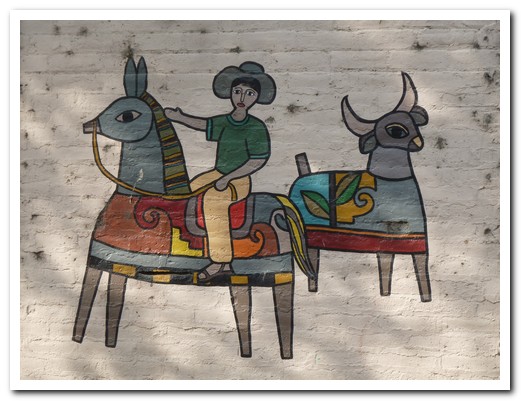
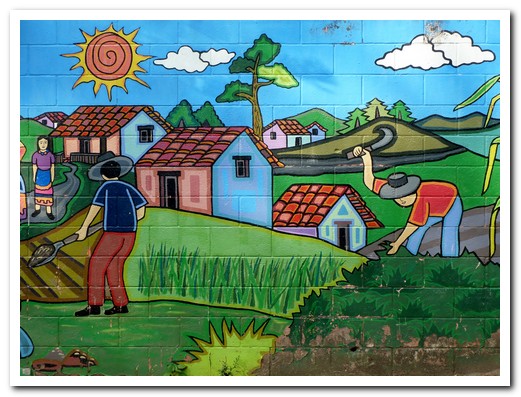
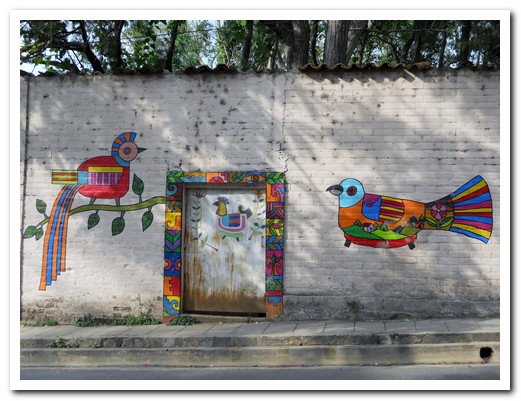
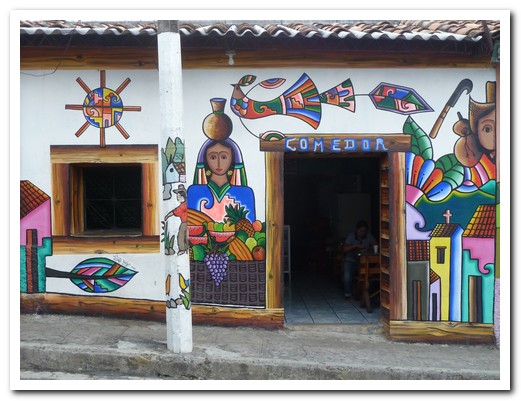
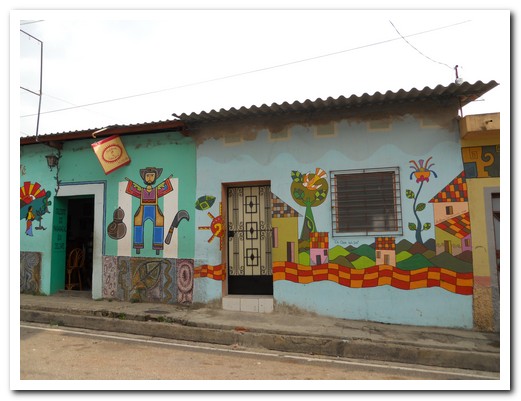
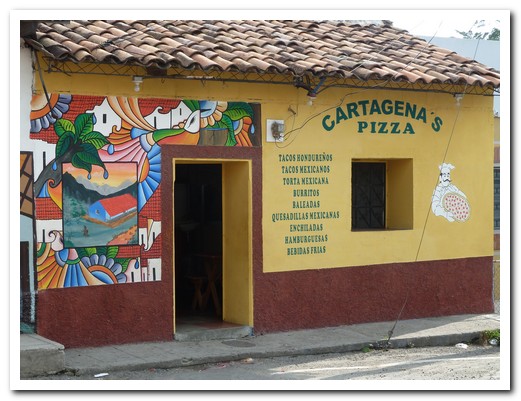
Our favourite restaurant in La Palma
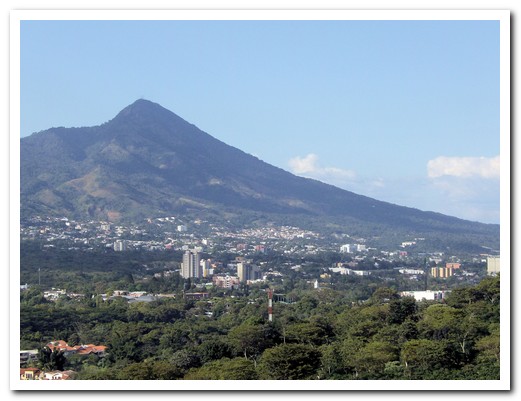
Volcán San Salvador dominates the Capital
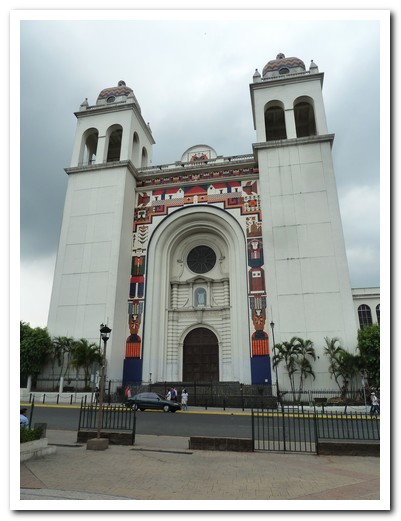
The original Cathedral was wooden but burnt down
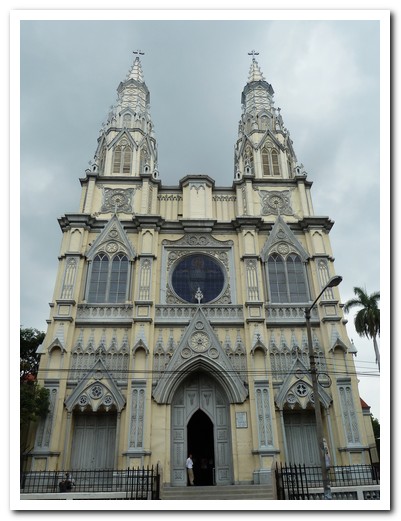
Historical church with walls of pressed metal
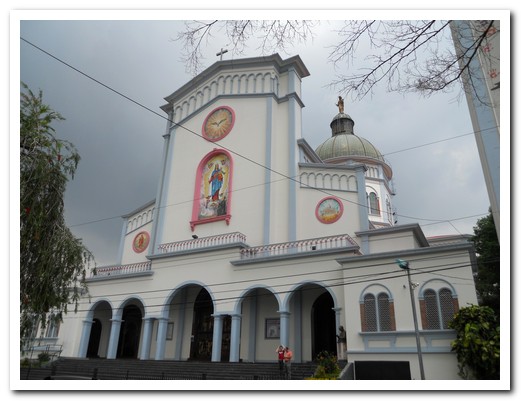
Basilica with ....
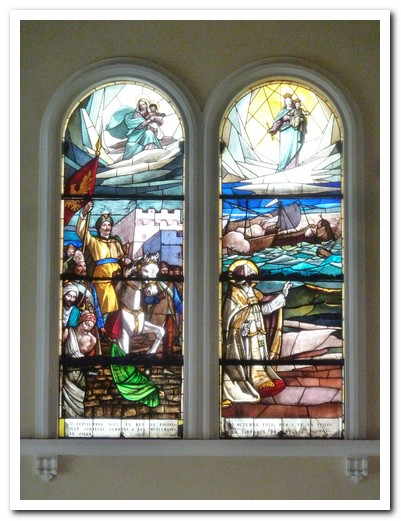
... beautiful stained glass windows
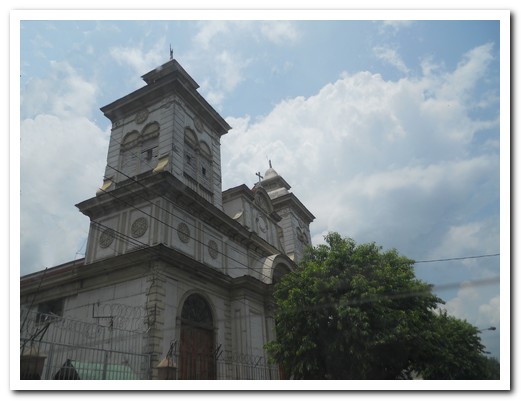
Old wooden church
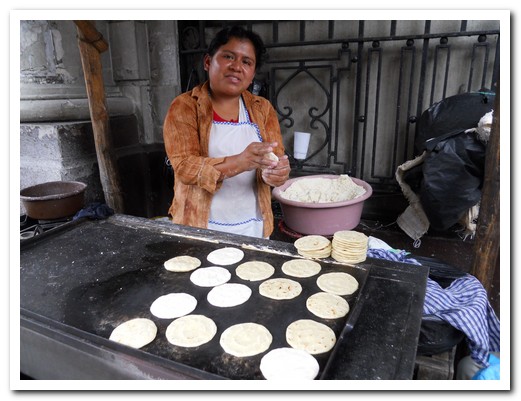
We stopped for a snack of tortillas fresh off the hot plate

Our hotel Posada de Rey Primero
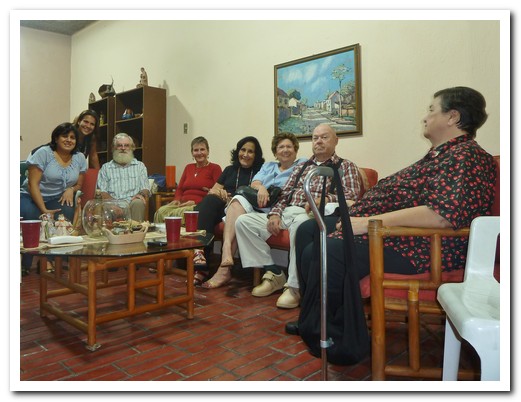
A visit with the Massi family and friends ...
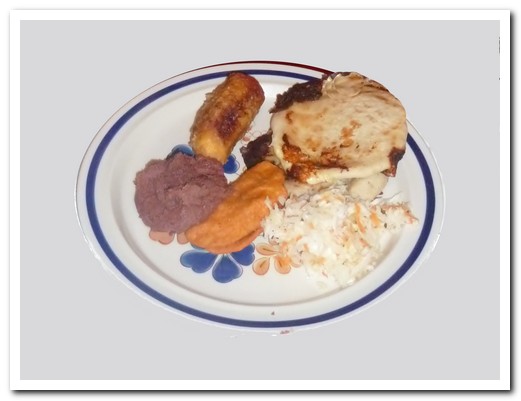
... for a great typical meal
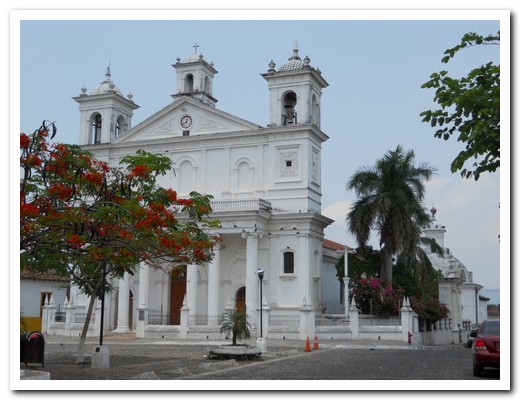
Cathedral at Suchitoto from 1823
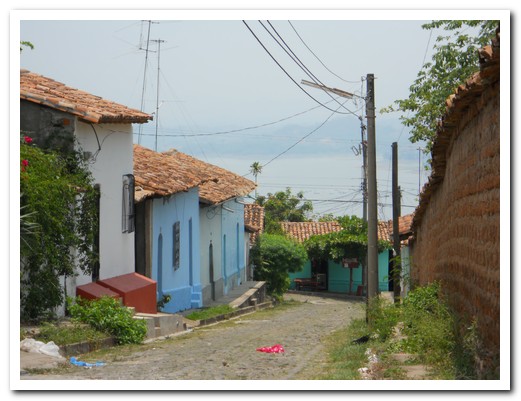
Colonial street of Suchitoto
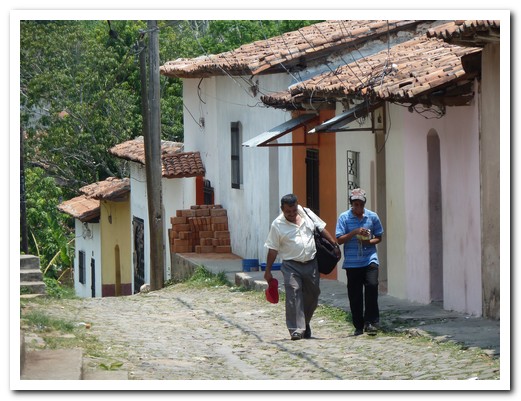
Colonial street of Suchitoto
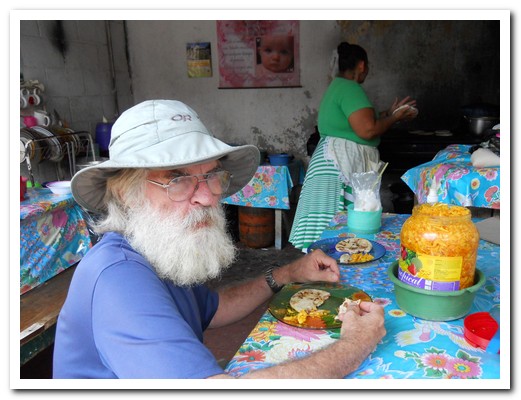
Pupasas straight off the fire
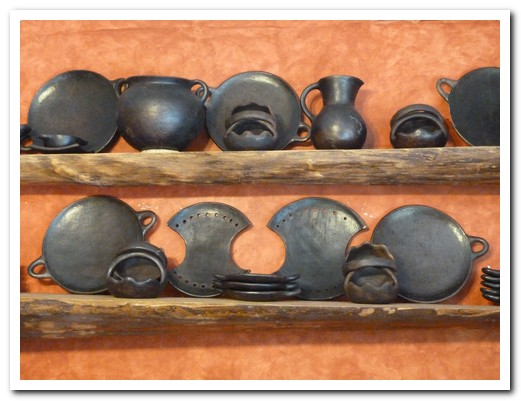
Black pottery from eastern El Salvador
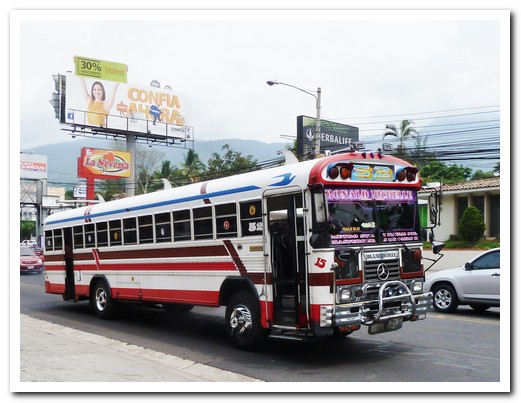
Buses in San Salvador are raised in the front. No one knows why. This one has 3 fins on top too!
Mayas, Volcanoes and Surf
20th May 2011
El Salvador has some modest but impressive Mayan sites. The Mayan village at Joya de Cerén [4], often called the “Pompeii of Central America”, was buried under ash from a volcanic eruption some 1400 years ago and remains well preserved. It is the only Mayan site where the everyday life of ordinary people can be seen. A plate found there shows finger marks and traces of food from an unfinished meal. Nearby San Andrés [5] was an ancient ceremonial centre and Tazumal [6], built around 500BC remained occupied until the Spanish arrived. At both sites, partially restored pyramids stand.
.
In Parque Nacionál Cerro Verde [7] we took a pleasant walk around the crater rim at 2000 metres. Volcán Izalco and Volcán Santa Anna were occasionally visible through the swirling mist. Local families were enjoying their Sunday off. Below lies the picturesque crater lake, Lago Coatepeque.
.
Finishing off with a couple of days at Playa El Tunco [8], a pleasant little surfers community on the Pacific coast we watched both local and gringos ride some big waves. Five kilometres east at Puerto La Libertad fisherman wait for a break in the surf, then race their boats in to be quickly winched up onto the end of wharf before the next wave crashes in.
.
We enjoyed our time in El Salvador and the Salvadoreños were some of the most friendly people we have met. Crossing the border into Guatemala at La Hachadura [9] we headed onto Antigua.
.
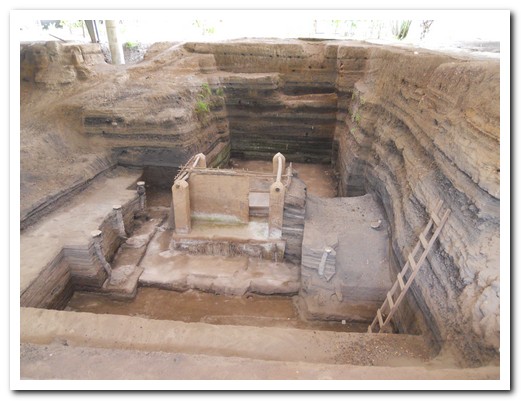
Mayan village house dug out of layers of volcanic ash at Joya de Cerén
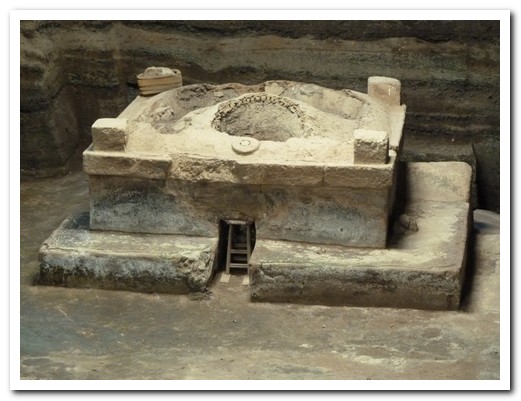
The village sauna at Joya de Cerén
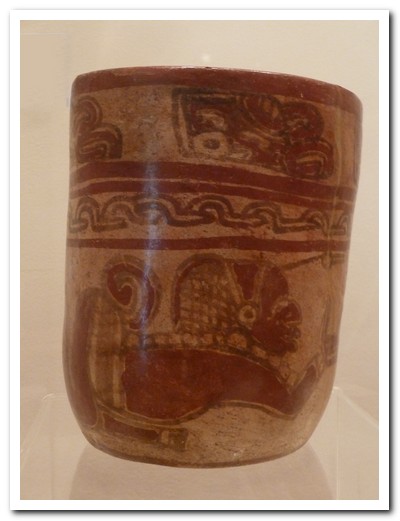
Decorated vessel
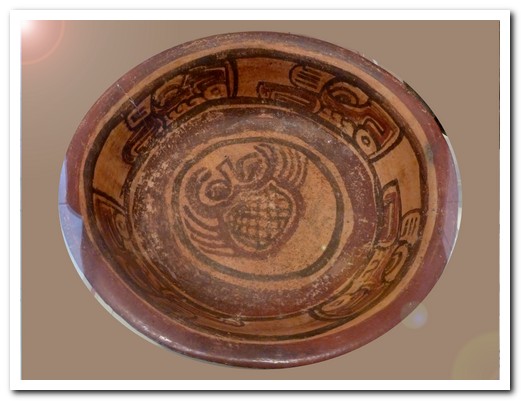
Bowl with crab motif
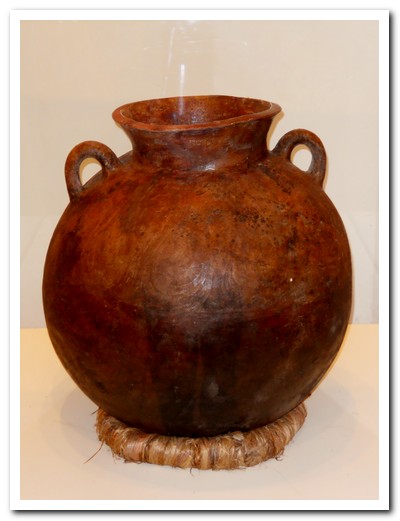
Large urn
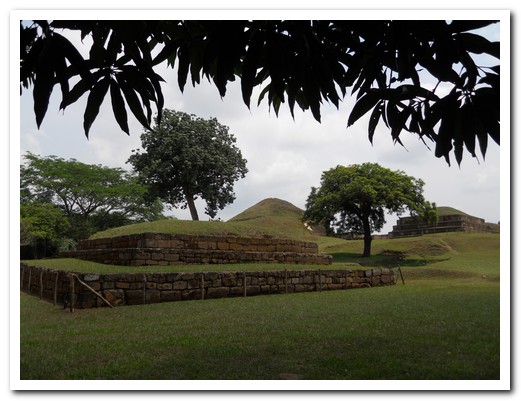
Pyramids at San Andres
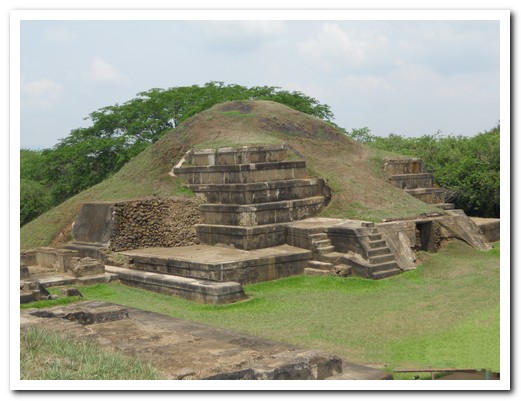
Temple San Andres
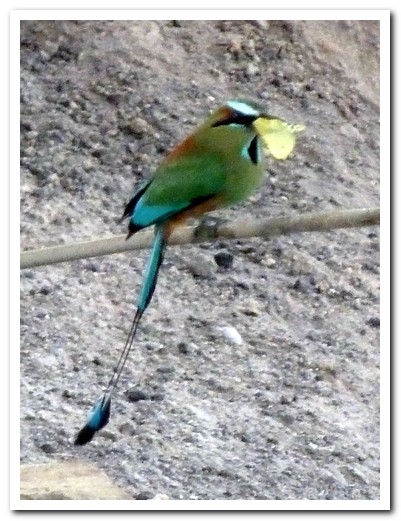
Torogoz, the national bird, with butterfly in its mouth
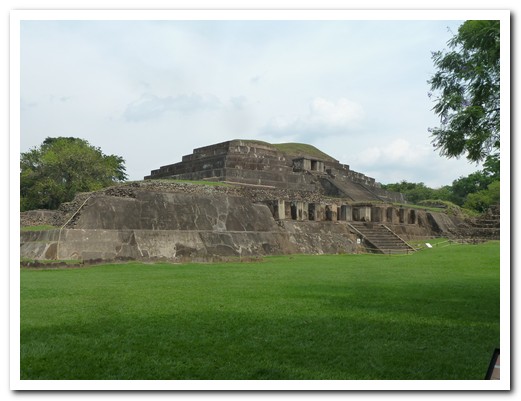
Temple at Tazumal
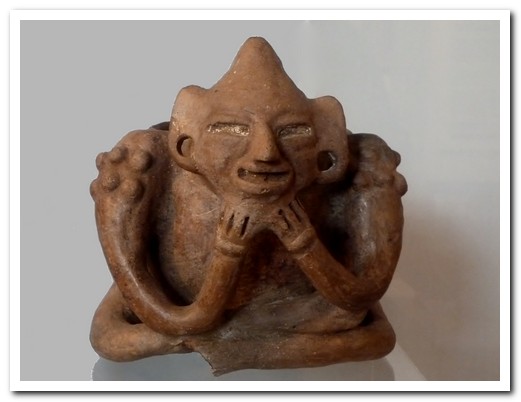
Pottery figure on a bowl
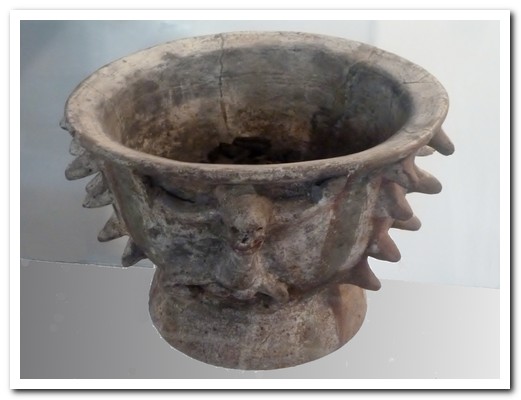
Bowl with spikes, representing the Ceiba tree
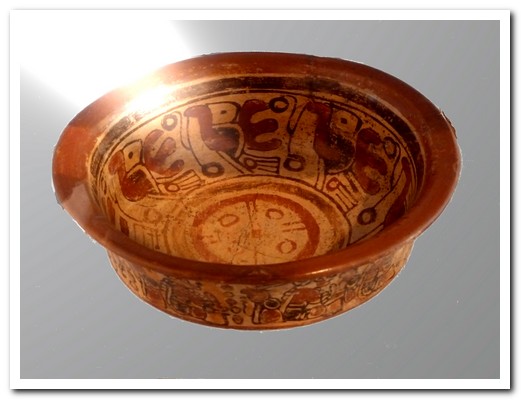
Decorated bowl
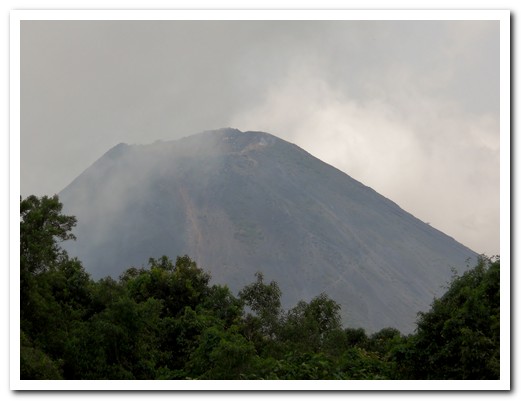
Volcán Izalco emerging from the mist

Salvadoreños don´t go on a picnic without the hammock
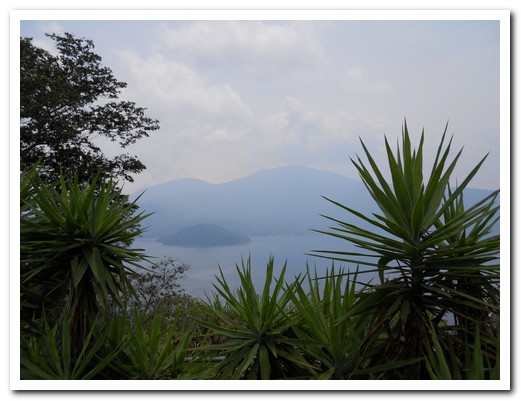
Volcanic Lake Coatepeque
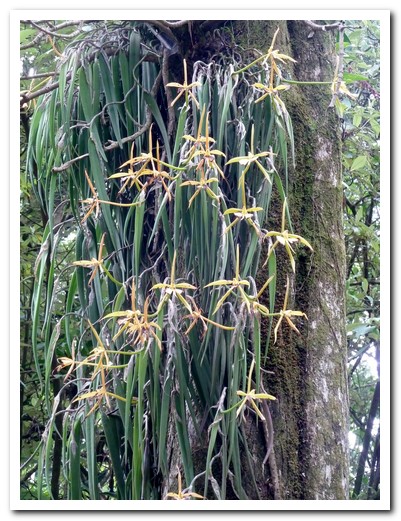
Orchids on Cerro Verde
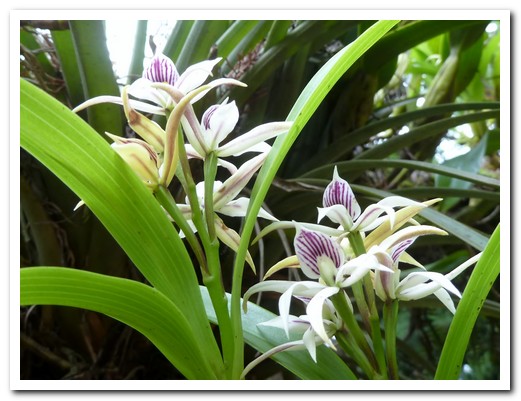
Orchids on Cerro Verde
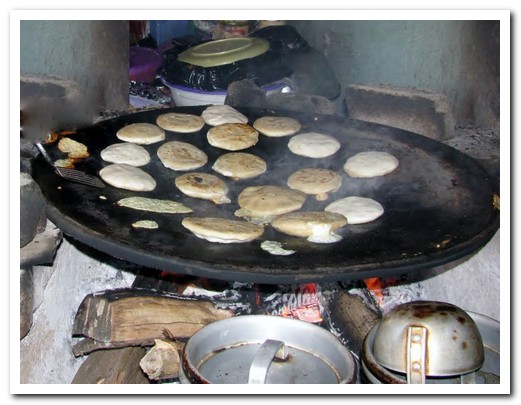
Pupusas cooked the traditional way on a comal over a wood fire
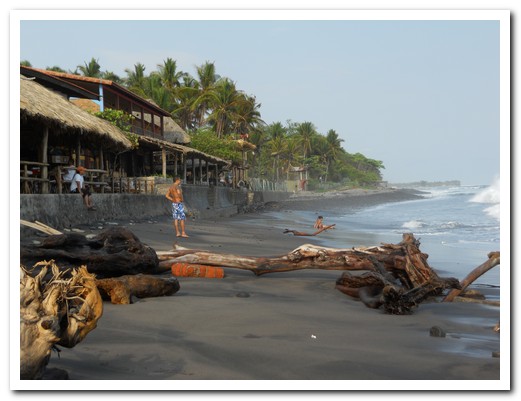
Playa El Tunco
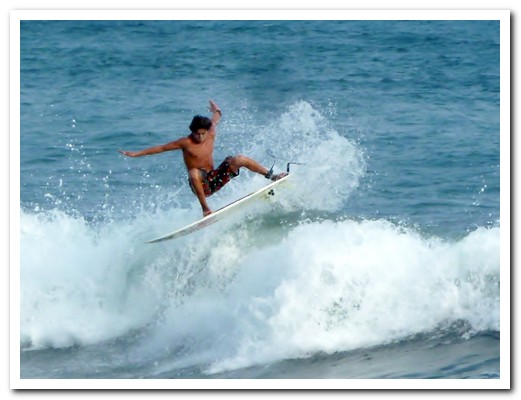
Surfing at El Tunco is world class
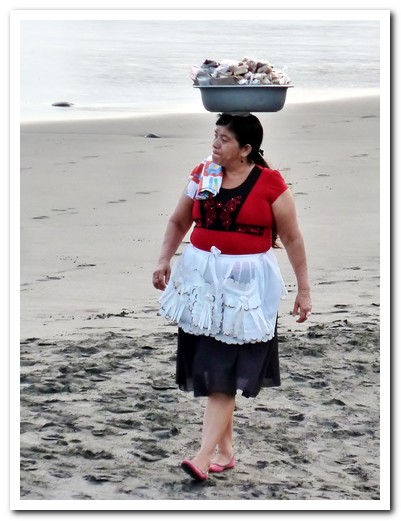
Lady selling fresh cashews and almonds on the beach
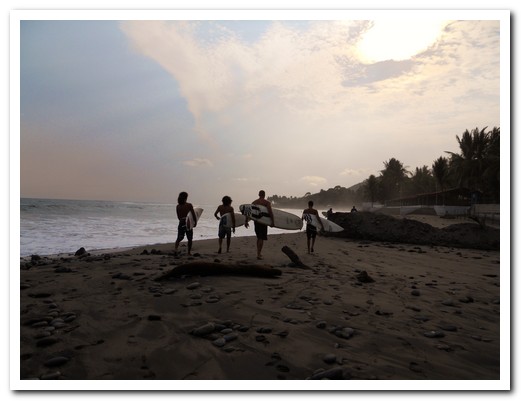
Surfers are still heading out at dusk
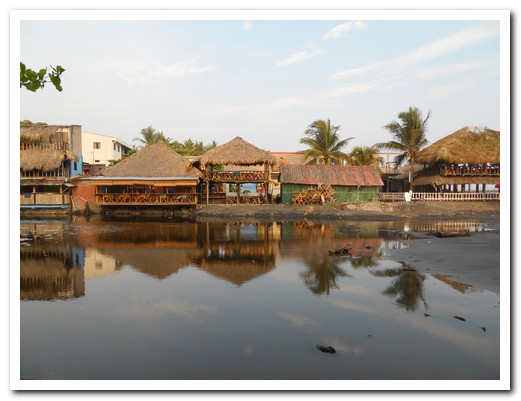
Reflections in the stream
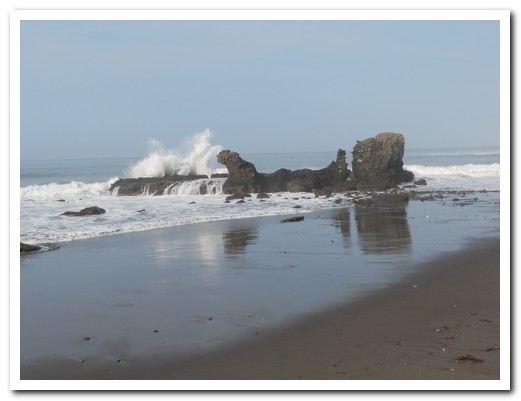
El Tunco - the rock is supposed to look like a pig
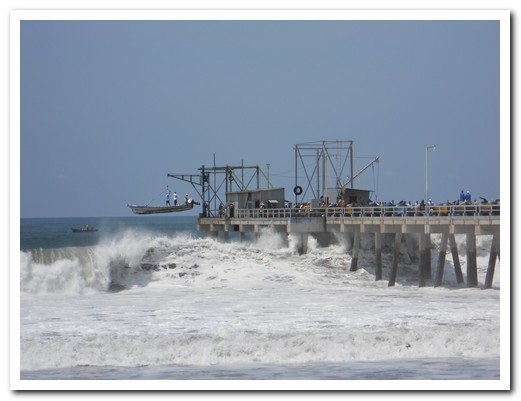
Hauling up the fishing boat onto the wharf between waves
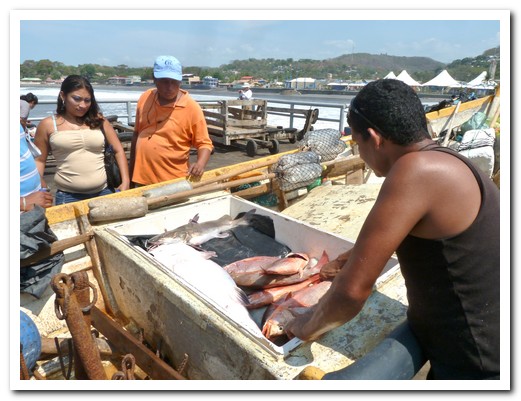
Fish for sale straight from the boat
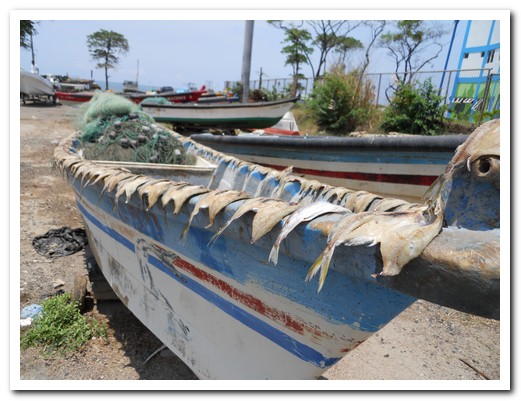
Fish drying in the sun
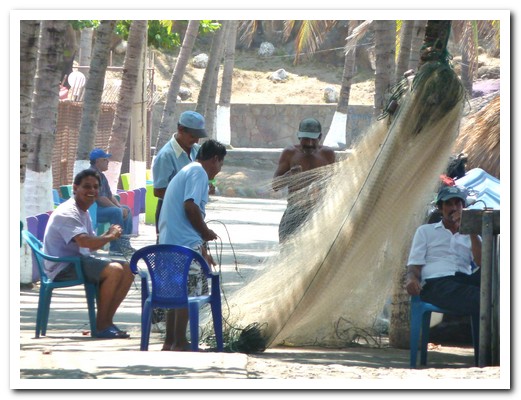
Repairing the nets under the shade of coconut trees
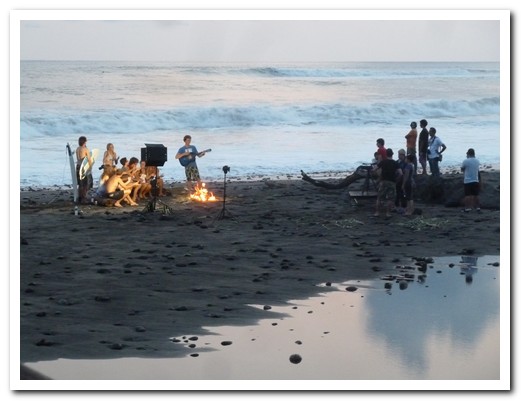
The Ministry of Tourism gathered up all the gringos to film an advertisement on the beach